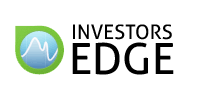One of the dangers when becoming involved in property investments is making sure you can make a profit. After all, the whole point is to make money, so you don’t want to blindly buy homes without crunching some numbers first. To calculate the return on your investment, you’ll need the gross annual income of the property and the annual expenses the property will incur.
There are several calculations you can use to measure the potential success of your investment: yield, gross rent multiplier, debt coverage ratio and cash on cash return. Here’s how to calculate each, as well as how to interpret them.
Once you have the required numbers in hand, you can begin by determining the yield. The yield is the most basic analyzing calculation; to calculate, divide the gross annual income by the sale price. While this doesn’t give you much of an idea of its economical value, it does give you a general percentage that you can expect to receive back in profits. The higher the result, the better.
Another good thing to know is how long it will take you to earn back what you spent on it. The Gross Rent Multiplier, or GRM for short, is used for this purpose. Simply divide the sale price by the annual rental income. In this case, the lower the number, the better.
The Debt Coverage Ratio (DCR) is most commonly used by lenders, but it can provide a good overview of how well your property will be at covering its expenses. Essentially, this calculation will provide how much money in excess of the mortgage payments the property will net.
Divide its net annual operating income by the annual mortgage payments.
Don’t forget to subtract maintenance costs from the rental income!
When lenders view the DCR, they like to see at least a 1.25, so if your property is at 1.25 or higher, you’re in good shape.
Last, but not least, we come to the Cash on Cash return (COC) calculation. This one tells you how much cash you’ll get from the property in a year, as opposed to your initial investment. To begin with, you need to calculate your cash flow prior to taxes. Subtract the mortgage payments from your gross annual income to get this number.
Now divide that number by your initial investment. If you put a down payment of $ 30,000 on the property and have a mortgage for the rest, then your initial investment is $ 30,000. The COC gives you a more accurate view at the actual return than the yield calculation, but remember it doesn’t take into effect all factors.
All of the above give only a basic idea of a property’s potential. Remember to also consider things like property taxes, equity and other factors.
Realnet has experts to help you weigh your options. We have Tampa Bay real estate foreclosures and other investment property for sale. Have questions? Contact us today to get all of your questions answered!

